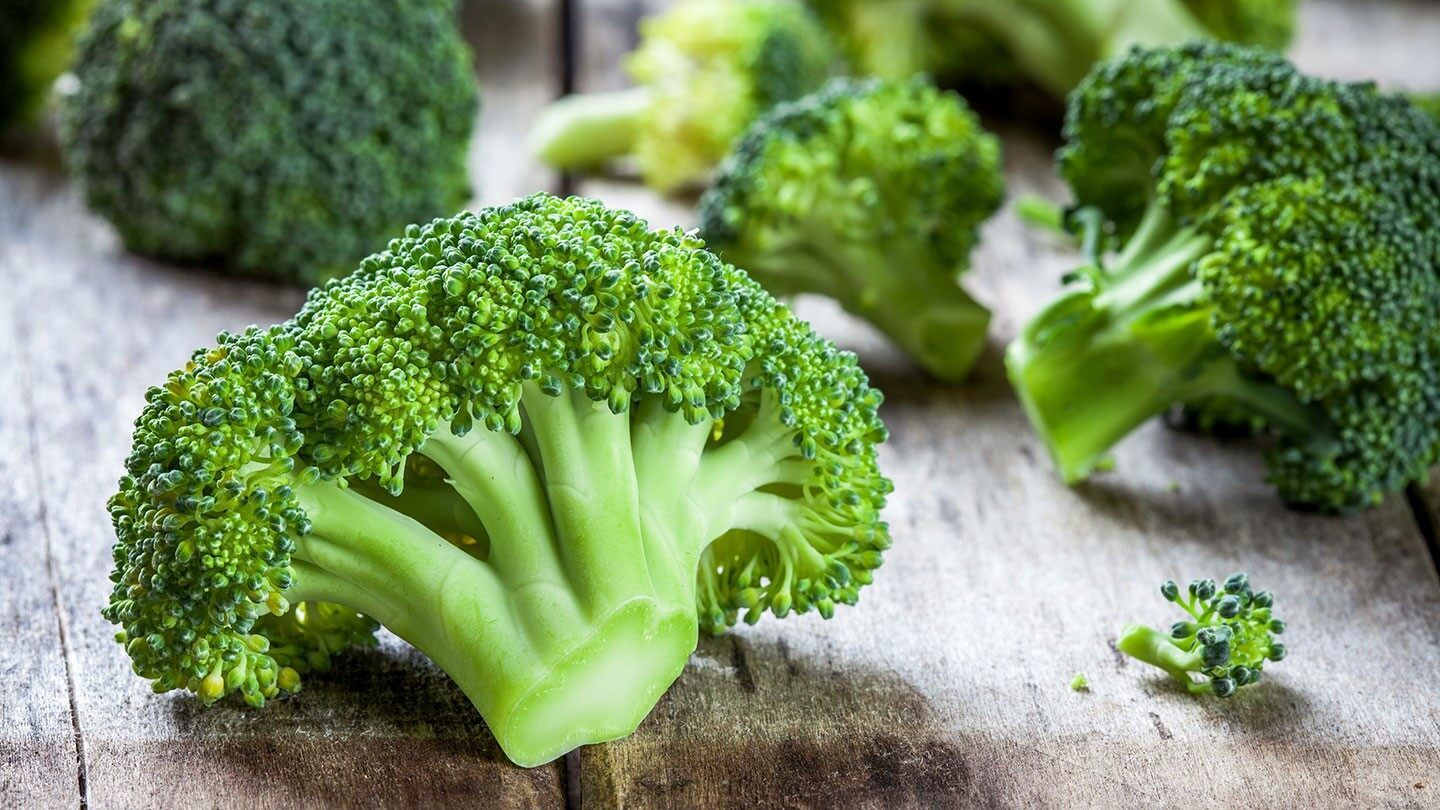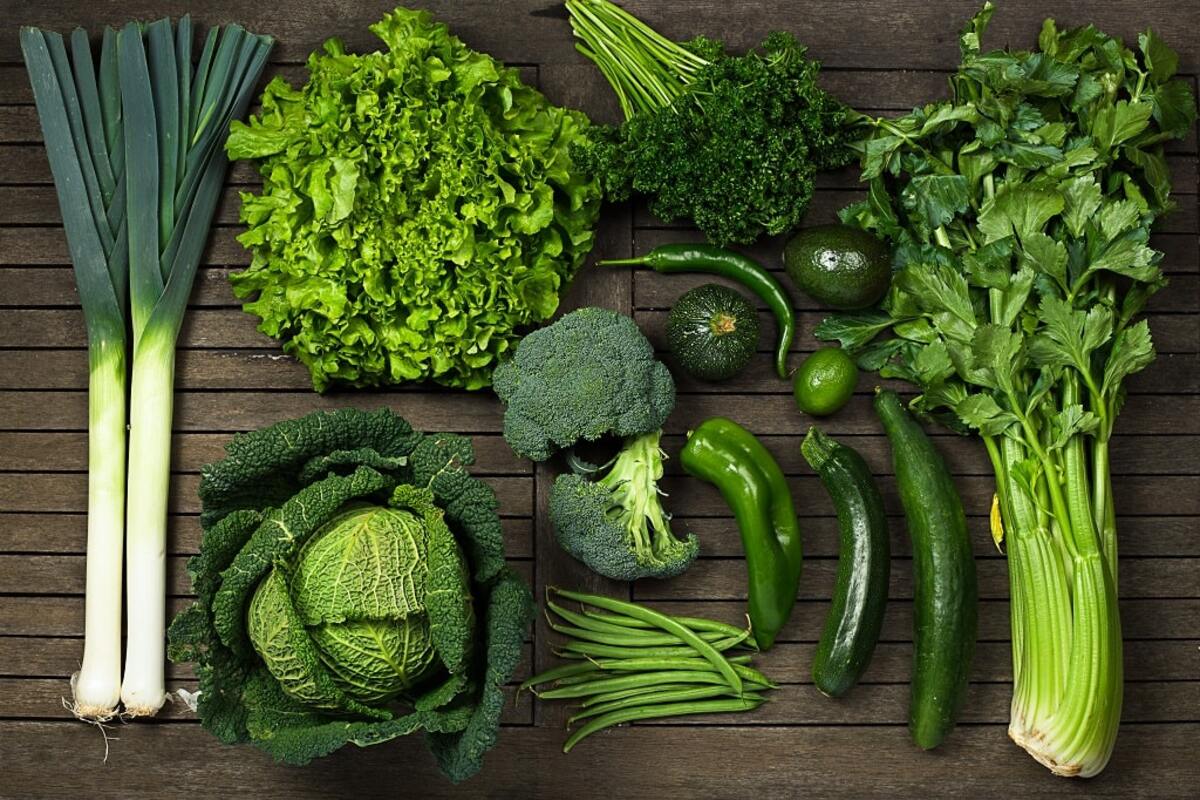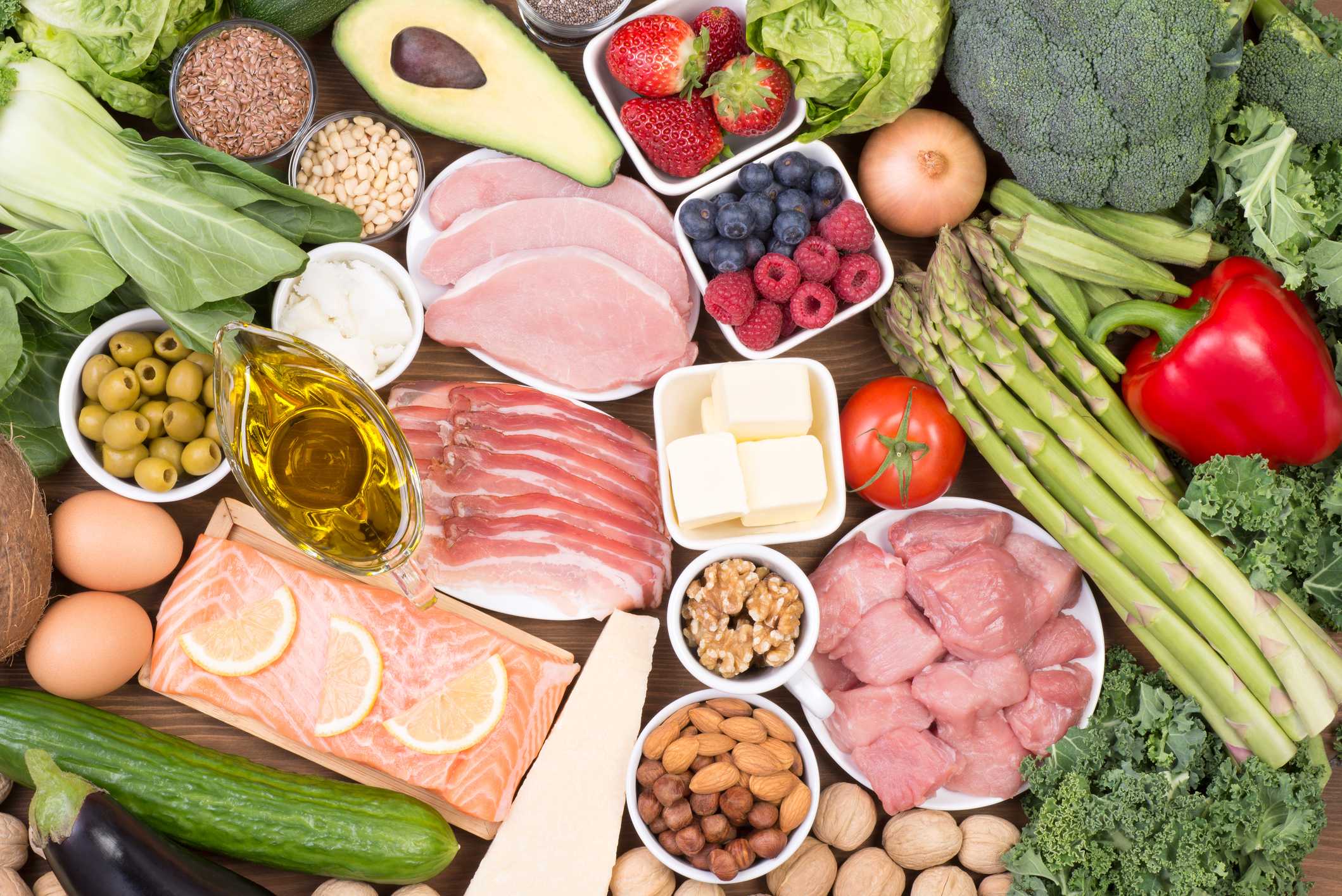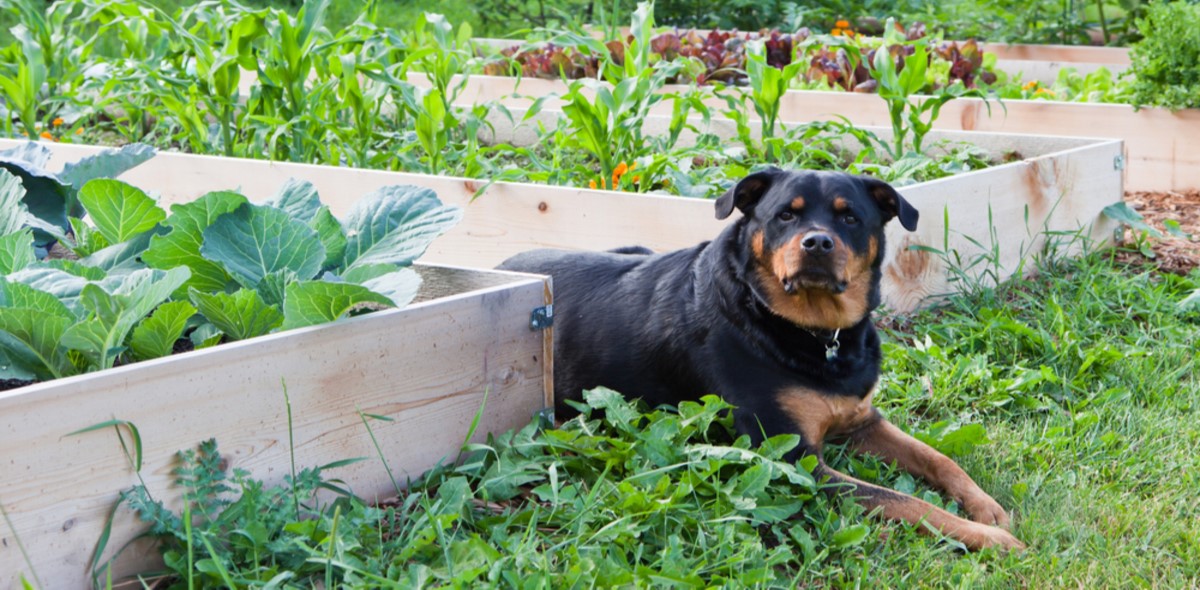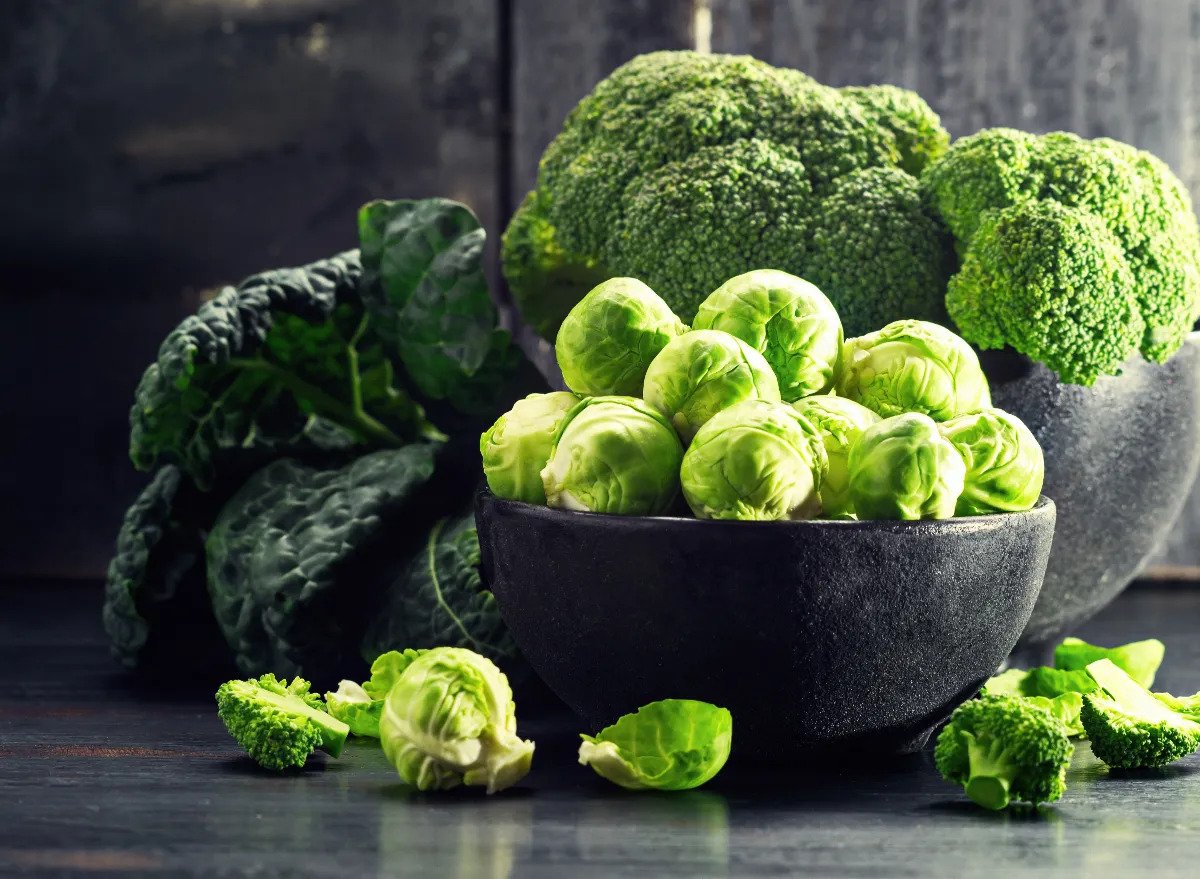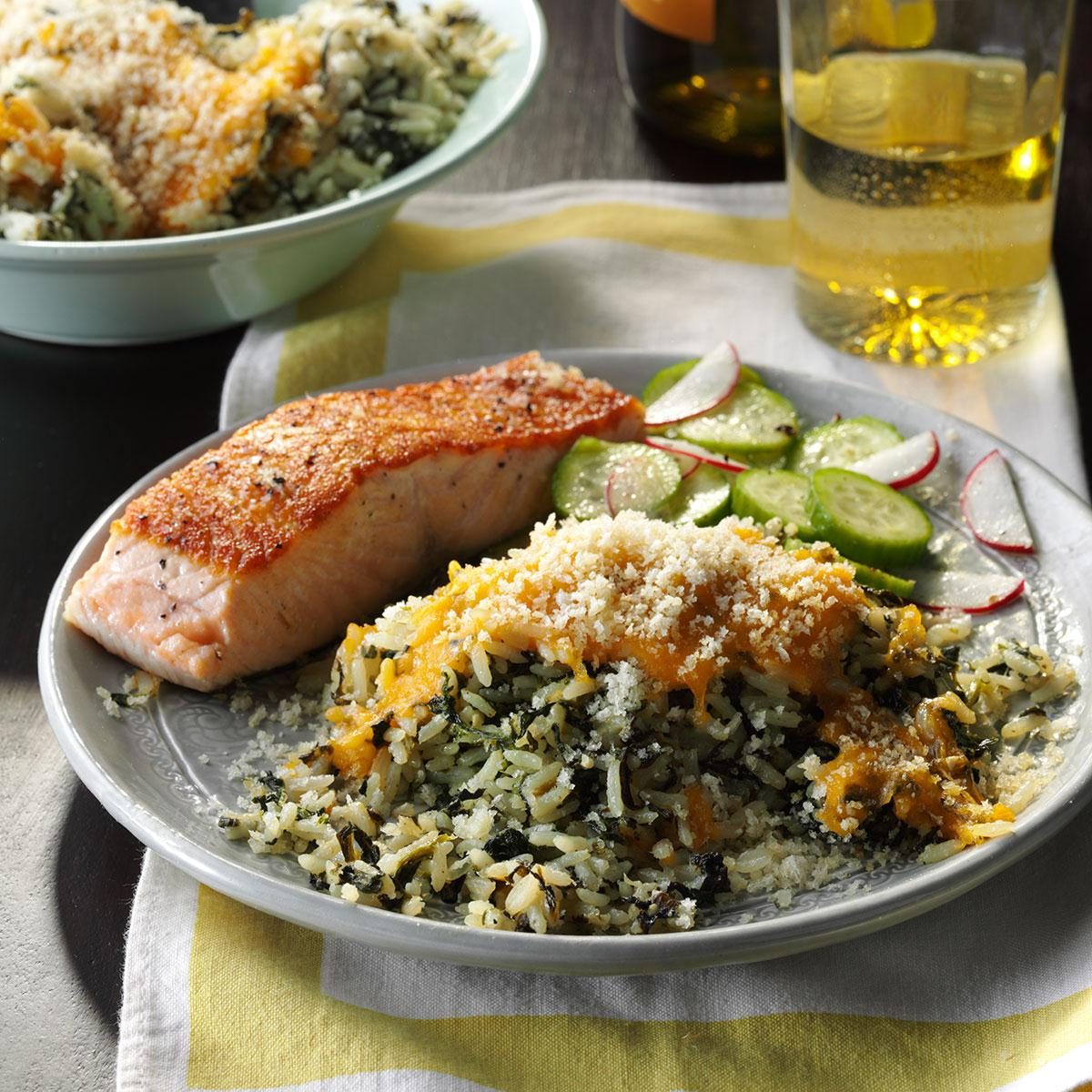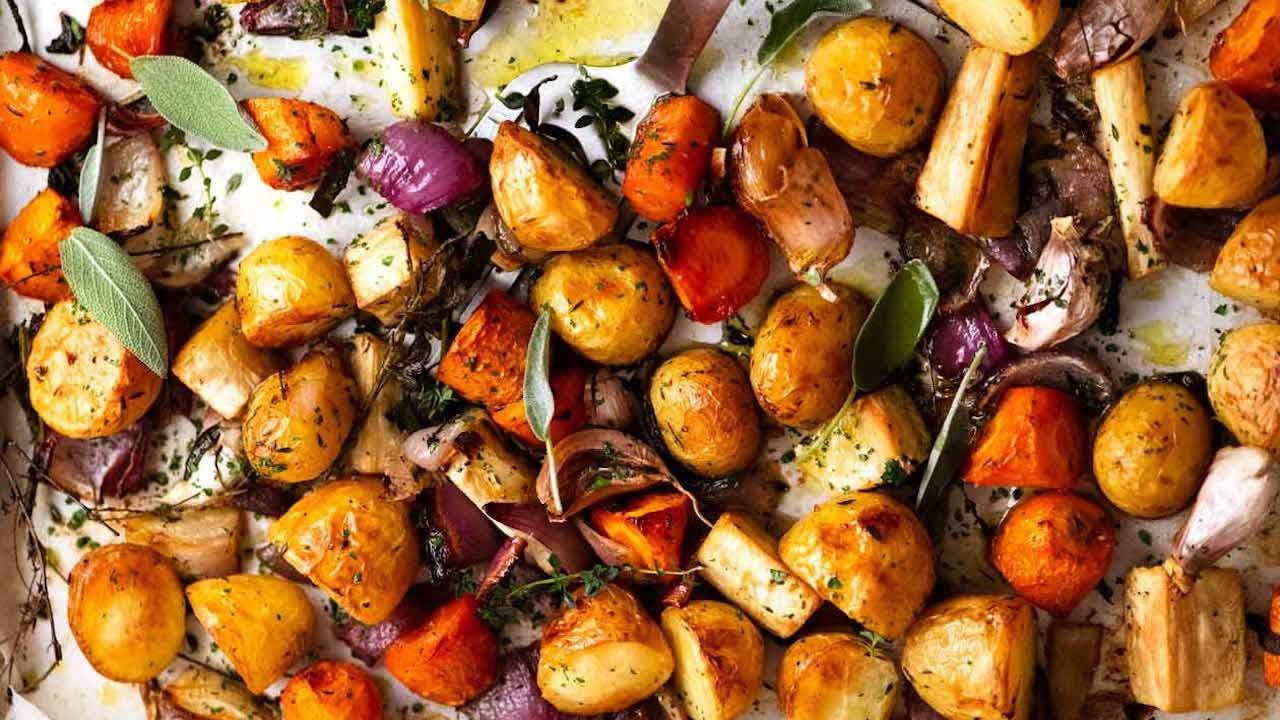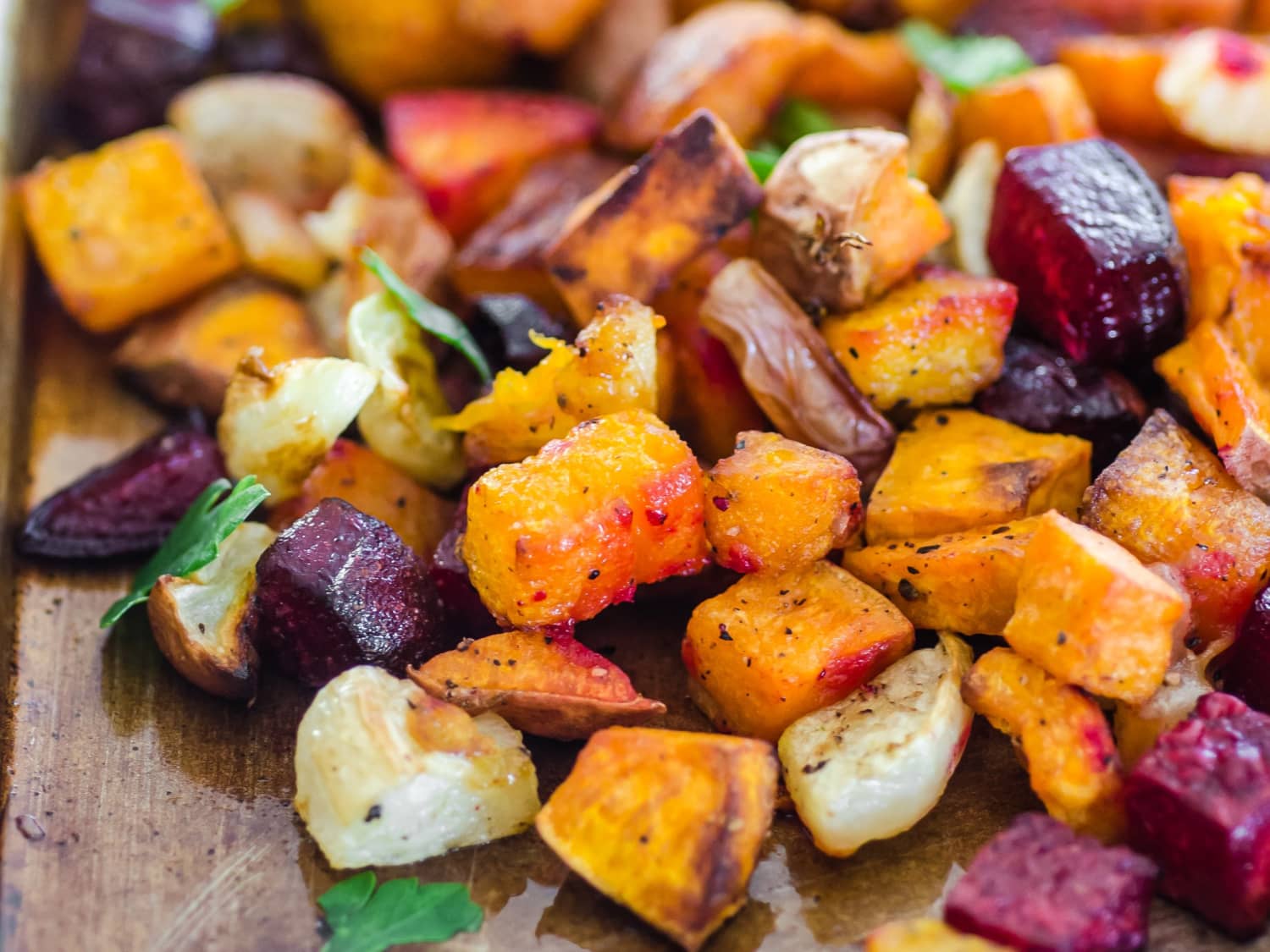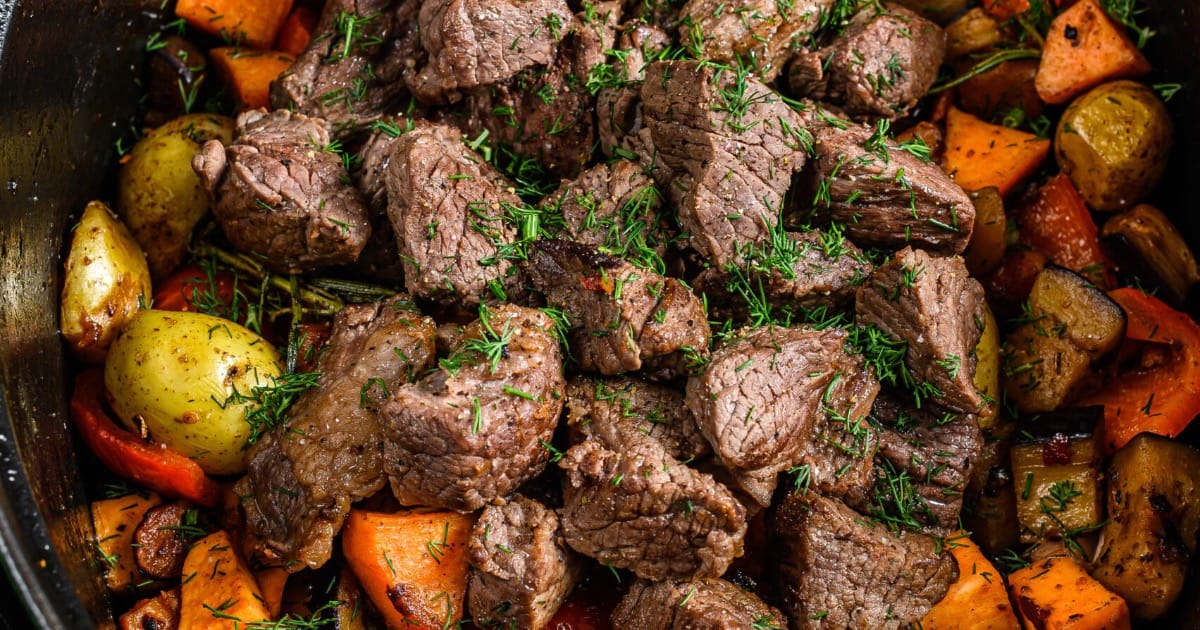Home>Types of Gardening>Edible Gardening>What Are Good Vegetables To Roast
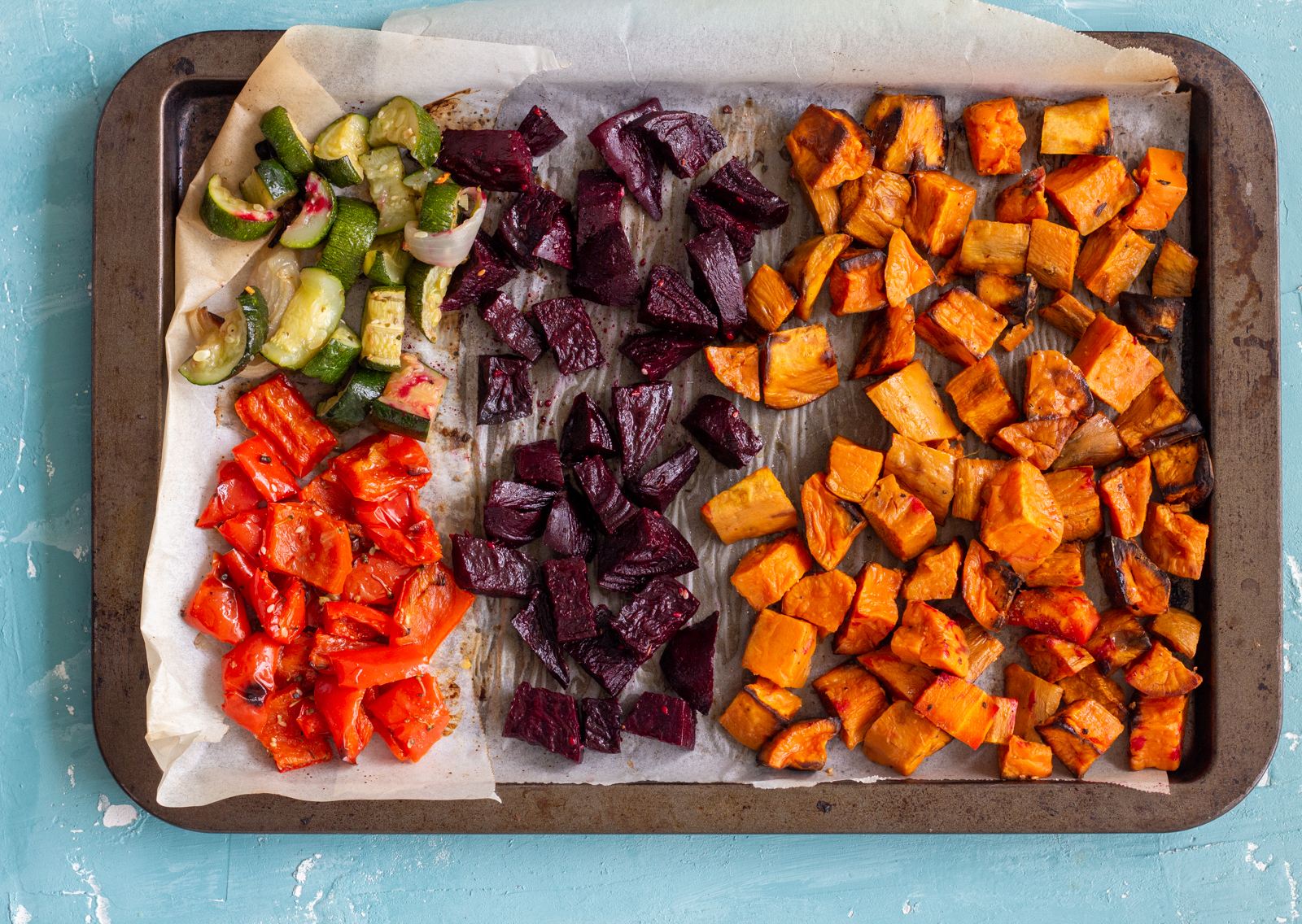

Edible Gardening
What Are Good Vegetables To Roast
Modified: January 22, 2024
Discover a variety of delicious and nutritious vegetables perfect for roasting in your edible gardening journey. Enhance your meals with these flavorful options.
(Many of the links in this article redirect to a specific reviewed product. Your purchase of these products through affiliate links helps to generate commission for Chicagolandgardening.com, at no extra cost. Learn more)
Table of Contents
Introduction
Roasting vegetables is not only a delicious way to enjoy your favorite produce, but it also brings out their natural flavors and textures. Whether you are a seasoned cook or just starting your edible gardening journey, learning about the best vegetables to roast can elevate your culinary skills to new heights.
There is something truly magical about the transformation that occurs when vegetables are roasted. The heat of the oven caramelizes their natural sugars, creating a depth of flavor that is unmatched. Roasting also adds a delightful crunch to the exterior while keeping the inside tender and moist.
Not only is roasting vegetables a tasty cooking method, but it’s also incredibly versatile. You can serve roasted vegetables as a side dish, use them as a filling for wraps or sandwiches, or even toss them with pasta for a hearty and nutritious main course.
Perhaps the best part about roasting vegetables is that it is incredibly simple. With just a few basic ingredients and some oven time, you can turn ordinary vegetables into a culinary masterpiece. Plus, it’s a great way to use up any excess vegetables you may have from your edible garden.
In this article, we’ll explore the benefits of roasting vegetables and provide you with a list of the top vegetables to roast. Whether you’re a herbivore looking for new flavors or a garden enthusiast with a surplus of fresh produce, you’ll discover some fantastic options to tantalize your taste buds.
Benefits of Roasting Vegetables
Roasting vegetables not only enhances their flavor but also offers several health benefits. Here are some of the reasons why you should consider incorporating roasted vegetables into your diet:
- Enhanced flavor: One of the primary benefits of roasting vegetables is the incredible depth of flavor it brings. The high heat of the oven caramelizes the natural sugars present in the vegetables, resulting in a delicious sweetness and savory taste. The browning effect adds a rich, nutty flavor that can elevate even the simplest of vegetables.
- Nutrient retention: Contrary to popular belief, roasting vegetables doesn’t diminish their nutritional value. While some vitamins may be lost during cooking, the dry heat of roasting helps retain essential nutrients like vitamins A, C, and K, as well as minerals like potassium and magnesium. Additionally, roasting increases the availability of certain antioxidants, making them more easily absorbed by the body.
- Increased fiber content: Vegetables are a great source of dietary fiber, and roasting them can actually increase their fiber content. The process of roasting breaks down the plant cell walls, making the fiber more accessible and easier to digest. Including fiber-rich roasted vegetables in your meals can aid digestion, promote satiety, and support a healthy gut.
- Texture and variety: Roasting vegetables brings out their natural textures and creates a delightful contrast between the soft, caramelized interior and the crispy exterior. This adds depth and complexity to your dishes, making them more enjoyable to eat. Roasted vegetables also provide versatility in your meals, allowing you to experiment with different flavors and combinations.
- Reduced oil usage: Unlike frying or sautéing, roasting vegetables requires minimal oil. You can lightly coat the vegetables in oil or use a cooking spray to help them brown and prevent sticking. This makes roasted vegetables a healthier cooking option, as it reduces the overall fat content while still delivering incredible taste and texture.
- Time efficiency: Roasting vegetables is a convenient way to prepare a large batch of food. Once you’ve seasoned and prepped the vegetables, you simply need to pop them in the oven and let them roast to perfection. This hands-off cooking method allows you to multitask and frees up time for other meal preparation or household tasks.
As you can see, the benefits of roasting vegetables go beyond just flavor and extend to your overall well-being. So, let’s dive into the top vegetables that are perfect for roasting, taking your culinary adventures to a whole new level!
Choosing the Right Vegetables for Roasting
When it comes to roasting vegetables, not all varieties are created equal. Some vegetables are more suited for roasting due to their texture, flavor profile, and ability to withstand high heat. Here are some factors to consider when selecting the right vegetables for roasting:
- Density and moisture content: Vegetables with a denser texture and lower moisture content tend to roast well. These vegetables hold up better during the cooking process and develop a delicious caramelized exterior while remaining tender on the inside. Examples of such vegetables include root vegetables like potatoes and carrots.
- Flavor profile: Consider the flavor profile of the vegetables you intend to roast. Some vegetables naturally have a sweeter taste, like bell peppers and onions, while others have a more earthy and nutty flavor, like Brussels sprouts and cauliflower. Combining vegetables with complementary flavors can create a harmonious and well-balanced roasted vegetable dish.
- Size and shape: The size and shape of the vegetables also play a role in their roasting success. It’s important to cut the vegetables into uniform pieces to ensure even cooking. Smaller pieces will roast faster, while larger chunks may require more time in the oven. Additionally, choosing vegetables of similar size allows for consistent cooking and a visually appealing final dish.
- Seasonality and freshness: Opt for vegetables that are in season and at their peak freshness. Seasonal vegetables tend to have better flavor and texture, resulting in tastier roasted dishes. If possible, consider growing your own vegetables or sourcing them from local farmers’ markets to ensure optimal quality and freshness.
- Versatility: Select vegetables that offer versatility in terms of their uses. Certain vegetables, like zucchini and bell peppers, are not only excellent roasted but can also be used in salads, stir-fries, and grilled dishes. This allows you to make the most of your roasted vegetables by incorporating them into a variety of meals.
By taking these factors into account, you can make informed choices when it comes to selecting the right vegetables for roasting. Now, let’s explore the top vegetables that truly shine when roasted and discover some delicious recipes to inspire your culinary creations!
Top Vegetables for Roasting
When it comes to roasting vegetables, some varieties are simply exceptional. They develop an irresistible sweetness, a crispy exterior, and a tender interior that makes them perfect for roasting. Here are some of the top vegetables that you must try roasting:
- Potatoes: Potatoes are a classic choice for roasting. Whether it’s russet potatoes, Yukon gold, or sweet potatoes, they all turn into deliciously golden and crispy morsels when roasted. Season them with herbs, garlic, and a drizzle of olive oil for a simple yet flavorful side dish.
- Carrots: Roasted carrots bring out their natural sweetness and develop a delightful caramelized exterior. Choose baby carrots or slice larger carrots into quarters lengthwise for even cooking. Toss them with a bit of honey, spices, and a sprinkle of sea salt to enhance their flavor.
- Brussels Sprouts: Brussels sprouts become tender and slightly crispy when roasted, creating a delightful combination of textures. Trim the ends, cut them in half, and toss them with olive oil, balsamic vinegar, and a touch of maple syrup for a sweet and tangy taste.
- Cauliflower: Roasting cauliflower transforms it into a nutty and flavorful delight. Break the cauliflower into florets, toss them with olive oil, garlic, and your favorite spices (such as turmeric or smoked paprika), and roast until golden brown for a delicious side or a tasty addition to salads.
- Sweet Potatoes: Sweet potatoes are not only incredibly nutritious but also perfect for roasting. They become soft, caramelized, and slightly crispy at the edges when roasted. Cut them into wedges or cubes, season with cinnamon, cayenne pepper, or a sprinkle of brown sugar, and enjoy the perfect balance of sweetness and spiciness.
- Bell Peppers: Roasting bell peppers brings out their natural sweetness and imparts a smoky flavor. Slice them into strips or roast them whole to easily remove the charred skin. Enjoy them as a side dish, in sandwiches, or as a topping for pizzas and pastas.
- Onions: Roasted onions become rich, sweet, and wonderfully caramelized. Slice them into thick rings or quarters, drizzle with olive oil, sprinkle with herbs, and roast until they turn soft and golden brown. They are perfect as a stand-alone side dish or a flavorful addition to various recipes.
- Zucchini: Roasting zucchini enhances its natural flavors and creates a tender yet slightly crisp texture. Slice the zucchini into rounds or long strips, toss with olive oil, garlic powder, and herbs, and roast until they become golden brown. Enjoy them as a side dish or use them as a topping for pizzas and wraps.
- Butternut Squash: Roasting butternut squash intensifies its sweet and nutty flavor. Peel and dice the squash into bite-sized cubes, toss with olive oil, cinnamon, and a drizzle of maple syrup, and roast until tender and caramelized. Serve it as a side dish, add it to salads, or use it as a base for comforting soups.
- Asparagus: Roasted asparagus becomes tender with a delightful charred flavor. Snap off the woody ends, drizzle with olive oil, sprinkle with salt and pepper, and roast until tender-crisp. Serve them alongside grilled meats, toss them in pasta dishes, or enjoy them as a nutritious snack.
These top vegetables for roasting offer a world of flavor and possibilities. Experiment with different combinations, seasonings, and cooking times to develop your own signature roasted vegetable dishes that will amaze your taste buds and impress your family and friends!
Potatoes
Potatoes are a beloved vegetable, and when roasted, they become even more irresistible. Their natural starches develop a crispy exterior, while the inside becomes tender and fluffy. Whether you prefer the classic russet potatoes, creamy Yukon golds, or the sweet and flavorful varieties of sweet potatoes, roasting them is a sure way to enhance their deliciousness.
To roast potatoes, start by preheating your oven to around 425°F (220°C). Scrub the potatoes clean and cut them into wedges or cubes, keeping them relatively uniform in size to ensure even cooking. For added flavor, toss the potatoes with olive oil, minced garlic, and a sprinkle of herbs like rosemary or thyme. Season with salt and pepper to taste.
Spread the potatoes in a single layer on a baking sheet, making sure they have enough space to brown and crisp up. Roast the potatoes in the preheated oven for about 30-40 minutes, flipping them once halfway through. Keep an eye on them towards the end to achieve your preferred level of crispiness.
Roasted potatoes are incredibly versatile and can be served as a side dish or used as a base for various meals. They pair well with roasted meats, grilled vegetables, or even added to breakfast hash. The crispy exterior and fluffy interior make them a delightful addition to any plate.
If you want to take your roasted potatoes to the next level, consider adding some extra ingredients. For a cheesy twist, sprinkle grated Parmesan or cheddar cheese over the potatoes during the last few minutes of roasting. You can also add some diced bacon, sliced onions, or bell peppers for a flavorful and satisfying combination.
Roasted potatoes are a crowd-pleasing comfort food that can elevate any meal. Whether you’re preparing a holiday feast, a weeknight dinner, or a backyard barbecue, including roasted potatoes will surely make it a memorable and delicious occasion.
Carrots
When it comes to roasting vegetables, carrots are a standout choice. Roasting brings out their natural sweetness and adds a touch of caramelization, resulting in a delightful flavor profile. The surface of the carrots becomes slightly crispy, while the inside remains tender and full of vibrant color.
To roast carrots, start by preheating your oven to 425°F (220°C). Peel the carrots and trim off the ends, then cut them into long, thin strips or thicker rounds. Keeping the size relatively uniform ensures even cooking. Place the carrots on a baking sheet, drizzle with olive oil, and season with salt and pepper.
For an extra burst of flavor, you can add a touch of honey or maple syrup to complement the natural sweetness of carrots. You can also sprinkle them with your favorite herbs and spices, such as rosemary, thyme, or cumin, to add depth and complexity.
Roast the carrots in the preheated oven for about 20-25 minutes, or until they are golden brown and tender. Keep an eye on them and give them a toss halfway through to ensure they roast evenly. The edges might become slightly caramelized and crispy, providing a satisfying texture contrast to the soft centers.
Roasted carrots can be enjoyed on their own as a delicious side dish, or they can shine as part of a larger meal. They pair wonderfully with roasted chicken, grilled meats, or even added to salads for added flavor and texture. Their natural sweetness can elevate any dish, adding a touch of brightness and freshness.
For a creative twist, try incorporating roasted carrots into different recipes. You can blend them with other roasted vegetables and vegetable broth to create a flavorful carrot soup. Alternatively, puree roasted carrots with some garlic, herbs, and olive oil to make a vibrant and nutritious carrot dip.
Roasted carrots are not only tasty but also packed with nutritional benefits. They are a rich source of vitamins, minerals, and fiber, making them a healthy addition to your meals. By roasting them, you enhance their flavors while retaining their nutritional value.
Whether as a simple side dish or a star ingredient in a more complex recipe, roasted carrots are sure to satisfy your taste buds and add a burst of color and flavor to your plate.
Brussels Sprouts
Brussels sprouts are often misunderstood and underappreciated, but when they are roasted, they become a true culinary delight. Roasting caramelizes their natural sugars and transforms these mini-cabbages into tender, slightly crispy morsels with a wonderfully nutty and savory flavor.
To roast Brussels sprouts, preheat your oven to 425°F (220°C). Remove any damaged outer leaves and slice off the tough stems. If the sprouts are large, you can cut them in half for more even cooking. Toss the sprouts in a bowl with some olive oil, salt, and pepper until well coated.
You can enhance the flavor of Brussels sprouts by adding some additional ingredients. Consider tossing them with balsamic vinegar for a tangy and slightly sweet taste, or adding a sprinkle of Parmesan cheese for a savory twist. Feel free to experiment with your favorite seasonings, such as garlic powder, smoked paprika, or red pepper flakes, to customize the flavor profile.
Spread the Brussels sprouts in a single layer on a baking sheet, making sure they are not crowded. This allows them to roast evenly and develop a delicious crispness. Roast them in the preheated oven for about 20-25 minutes, stirring once or twice during cooking to ensure they brown evenly.
The result is a plate of roasted Brussels sprouts with a delectable caramelized exterior and a tender, buttery center. The natural bitterness of the Brussels sprouts is mellowed, leaving behind a delicious nutty flavor that will surprise and delight even the most skeptical eaters.
Roasted Brussels sprouts make a wonderful side dish that pairs well with a variety of main courses. They complement roasted meats like chicken, beef, or lamb beautifully and add a pop of color and flavor to any plate. You can also incorporate them into salads or pasta dishes for a nutritious and flavorful boost.
Not only are roasted Brussels sprouts incredibly tasty, but they are also packed with nutrients. They are an excellent source of vitamins C and K, as well as fiber and antioxidants. By roasting the sprouts, you retain their nutritional value while transforming them into a more palatable and enjoyable form.
Next time you have Brussels sprouts on hand, give them a chance to shine by roasting them. You might just discover a newfound love for these delightful miniature cabbage-like vegetables.
Cauliflower
Cauliflower is a versatile vegetable that takes on a whole new dimension of flavor and texture when roasted. Roasting cauliflower intensifies its natural nuttiness and brings out its sweetness, creating a savory and delicious side dish or a tasty addition to various recipes.
To roast cauliflower, start by preheating your oven to 425°F (220°C). Remove the outer leaves and cut the cauliflower head into florets of similar size. Drizzle the florets with olive oil, season with salt, pepper, and your choice of herbs or spices. Toss until the florets are evenly coated.
For an added burst of flavor, you can experiment with different seasonings. Sprinkle the cauliflower with smoked paprika for a smoky kick, or add some garlic powder and Parmesan cheese for a savory twist. You can even toss it with a mixture of turmeric, cumin, and coriander for a vibrant and aromatic profile.
Spread the seasoned cauliflower florets in a single layer on a baking sheet. Ensure that they have enough space between them to allow for browning and crisping. Roast in the preheated oven for about 20-25 minutes, flipping them once halfway through, until the florets are golden brown and tender.
The result is roasted cauliflower with a caramelized exterior and a tender, melt-in-your-mouth interior. The natural sweetness of the cauliflower comes alive, and the edges develop a pleasant crispness that adds a delightful textural contrast.
Roasted cauliflower can be enjoyed in various ways. It pairs well with roasted meats, such as grilled chicken or lamb, for a satisfying and flavorful meal. You can also add it to salads, grain bowls, or pasta dishes to incorporate its unique taste and add a nutritional boost to your meals.
If you’re looking to get creative, try pureeing roasted cauliflower with some vegetable broth and seasonings for a creamy and flavorful soup. You can also use roasted cauliflower as a pizza topping or blend it into a smooth puree to use as a healthier alternative to mashed potatoes.
In addition to its delicious taste, roasted cauliflower offers numerous health benefits. It is low in calories but rich in essential nutrients like vitamin C, vitamin K, and fiber. By roasting cauliflower, you retain these nutrients while enhancing its flavor, making it a nutritious and satisfying vegetable to incorporate into your diet.
Explore the versatility of cauliflower by roasting it and discovering its delightful transformation. With its nutty flavor and beautiful caramelized edges, roasted cauliflower is sure to be a star ingredient in your culinary repertoire.
Sweet Potatoes
Sweet potatoes are not only delicious but also perfect for roasting. When roasted, these vibrant root vegetables become soft, caramelized, and slightly crispy, resulting in a delectable combination of flavors and textures.
To roast sweet potatoes, start by preheating your oven to 425°F (220°C). Peel the sweet potatoes and cut them into uniform wedges or cubes. This ensures even cooking and consistent texture. Toss the sweet potatoes with olive oil, salt, pepper, and any additional seasonings of your choice.
For a sweet and savory combination, consider adding a sprinkle of cinnamon, a touch of brown sugar, or a pinch of cayenne pepper for some heat. You can also experiment with different herbs and spices like rosemary, paprika, or nutmeg to create unique flavor profiles.
Spread the seasoned sweet potatoes in a single layer on a baking sheet, ensuring that they have enough space to brown and crisp up. Roast them in the preheated oven for about 25-30 minutes, flipping them once halfway through to promote even browning.
The result is roasted sweet potatoes with a caramelized exterior and a tender, creamy interior. The natural sweetness of the potatoes is enhanced, and the edges develop a delightful crispness that adds a textural contrast to each bite.
Roasted sweet potatoes can be enjoyed as a side dish on their own, or they can be used as a versatile ingredient in various dishes. They pair well with roasted meats, such as grilled chicken or pork tenderloin. You can also add them to salads, grain bowls, or even use them as a base for a nutritious vegetable mash.
For a creative twist, try incorporating roasted sweet potatoes into a breakfast hash by sautéing them with onions, bell peppers, and cooked bacon. You can also use them as a filling for tacos, quesadillas, or even as a topping for homemade pizzas.
In addition to their delicious taste, roasted sweet potatoes are packed with nutrients. They are an excellent source of vitamins A, C, and B6, as well as fiber and antioxidants. By roasting sweet potatoes, you retain these nutrients and create a flavorful and nutritious addition to your meals.
Next time you have sweet potatoes on hand, try roasting them to experience their delightful transformation. With their natural sweetness and delightful texture, roasted sweet potatoes are sure to become a favorite ingredient in your culinary repertoire.
Bell Peppers
Bell peppers are vibrant and versatile vegetables that take on a whole new level of flavor when roasted. Roasting bell peppers enhances their natural sweetness and imparts a smoky and slightly charred taste, making them a delicious addition to various dishes.
To roast bell peppers, start by preheating your oven to 425°F (220°C). Wash the peppers and remove the stem, seeds, and membranes. Slice them into halves or quarters, depending on your preference. Toss the peppers with a drizzle of olive oil, salt, and pepper, ensuring they are well coated.
For additional flavor, you can season the peppers with herbs like oregano, basil, or thyme. A sprinkle of balsamic vinegar or a squeeze of lemon juice can also enhance their taste. If you prefer a spicy kick, add a pinch of chili flakes or a sprinkling of paprika.
Place the seasoned bell peppers on a baking sheet, skin side up, and roast them in the preheated oven for about 20-25 minutes, or until the skins are charred and blistered. The high heat of the oven will soften the flesh of the peppers and develop their signature smoky flavor.
After roasting, transfer the peppers to a bowl and cover them with a kitchen towel or plastic wrap. This allows the steam to loosen the skins, making them easier to remove. Once the peppers have cooled slightly, peel off the charred skin and discard it.
The result is roasted bell peppers with a tender and sweet flesh, ready to be enjoyed in a variety of ways. You can use them as a topping for pizzas, sandwiches, or salads. They are also a great addition to pasta dishes, omelets, or as part of a antipasto platter.
Roasted bell peppers can be further enhanced by marinating them with olive oil, garlic, and your choice of herbs and spices. Stored in the fridge, marinated roasted peppers become even more flavorful and can be enjoyed for several days.
In addition to their delicious taste, roasted bell peppers are packed with nutrients. They are an excellent source of vitamins A and C, as well as dietary fiber. By roasting the peppers, you retain these nutrients while adding a dynamic and bold flavor to your meals.
Whether you use them as a vibrant side dish or incorporate them into your favorite recipes, roasted bell peppers bring a burst of color, flavor, and versatility to your culinary creations.
Onions
Onions are a staple ingredient in many dishes, and when roasted, they become a deliciously sweet and caramelized addition. Roasting onions softens their pungency and brings out their natural sweetness, resulting in a flavorful and versatile vegetable that can be enjoyed in various ways.
To roast onions, start by preheating your oven to 425°F (220°C). Peel and cut the onions into thick rings or quarters, ensuring they are of uniform size to promote even cooking. Drizzle the onion pieces with olive oil, sprinkle them with salt, pepper, and your choice of herbs or spices.
For a classic flavor profile, you can season the onions with thyme, rosemary, or garlic. If you prefer a balsamic twist, add a drizzle of balsamic vinegar before roasting. You can also add a touch of sweetness with a sprinkle of brown sugar or a drizzle of honey.
Spread the seasoned onion slices on a baking sheet in a single layer, allowing enough space for them to brown and develop a caramelized exterior. Roast them in the preheated oven for about 25-30 minutes, flipping them once or twice during cooking to promote even browning.
The result is roasted onions with tender, golden brown edges and a rich, sweet, and savory taste. The high heat of the oven softens the pungency of the onions while enhancing their natural flavors, resulting in a melt-in-your-mouth experience.
Roasted onions can be enjoyed in various ways. You can use them as a side dish, serve them alongside grilled meats or roasted vegetables, or add them to sandwiches, wraps, or salads for an extra burst of flavor. They can also be pureed and used as a base for soups, stews, or sauces.
Additionally, roasted onions are a versatile ingredient in many recipes. They can be added to pizzas, quiches, omelets, or mixed into sautés and stir-fries to add depth and complexity. Their natural sweetness pairs well with a wide range of ingredients, providing a balance of flavors.
Roasted onions not only offer exceptional taste but also boast several health benefits. They are a good source of fiber, vitamins, and minerals, including vitamin C and potassium. By roasting the onions, you retain these nutrients while elevating their flavor, making them a nutritious addition to your meals.
Next time you have onions on hand, consider roasting them to unlock their natural sweetness and enjoy their rich, caramelized flavor. From side dishes to main courses, roasted onions bring a touch of comfort and depth to a wide range of dishes.
Zucchini
Zucchini is a versatile and nutrient-rich vegetable that becomes even more delicious when roasted. Roasting zucchini enhances its natural flavors and brings out a delightful combination of tenderness and slightly crispy edges, making it a fantastic addition to various dishes.
To roast zucchini, begin by preheating your oven to 425°F (220°C). Wash the zucchini and trim off both ends. Cut the zucchini into rounds or long strips, depending on the desired shape and presentation. Toss the zucchini in a bowl with olive oil, salt, pepper, and any additional seasonings you prefer.
For an added burst of flavor, consider seasoning the zucchini with garlic powder, dried herbs such as basil or oregano, or a sprinkle of Parmesan cheese. For a touch of heat, add a pinch of red pepper flakes or paprika. Toss the zucchini until it is evenly coated with the seasonings.
Arrange the seasoned zucchini in a single layer on a baking sheet, ensuring they have enough space to brown and roast evenly. Place the baking sheet in the preheated oven and roast for about 15-20 minutes, flipping the zucchini halfway through to promote even cooking.
The result is beautifully roasted zucchini with tender flesh and slightly caramelized edges. The zucchini retains its natural freshness while developing a delightful smoky and savory flavor. The varying textures of softness and crispness create a satisfying combination that adds depth to any dish.
Roasted zucchini is incredibly versatile and can be enjoyed in numerous ways. It can be served as a simple side dish, tossed with pasta, added to salads, or even used as a topping for pizza or bruschetta. Its mild and delicate flavor pairs well with a variety of ingredients, allowing you to experiment and explore different flavor combinations.
Beyond its delicious taste, roasted zucchini also offers several health benefits. It is low in calories and rich in essential nutrients such as vitamins A and C, as well as dietary fiber. By roasting zucchini, you retain these nutrients while enjoying the flavorsome experience of this versatile vegetable.
Whether you grow zucchini in your garden or find it at the local market, roasting it can elevate this humble vegetable to new heights. Explore the possibilities and enjoy the goodness of roasted zucchini in your favorite recipes.
Butternut Squash
Butternut squash is a beloved winter vegetable that truly shines when roasted. Roasting butternut squash intensifies its natural sweetness and creates a tender, caramelized texture that is both comforting and satisfying. Whether as a side dish or a main course ingredient, roasted butternut squash adds a touch of warmth and earthiness to any meal.
To roast butternut squash, preheat your oven to 425°F (220°C). Peel the squash, remove the seeds, and cut it into bite-sized chunks or cubes. Toss the squash with olive oil, salt, pepper, and any desired seasonings such as cinnamon, nutmeg, or thyme.
For an even more decadent flavor, you can drizzle the squash with maple syrup or sprinkle some brown sugar on top. These additions enhance the natural sweetness of the butternut squash, creating a perfectly balanced dish.
Spread the seasoned butternut squash on a baking sheet, making sure the pieces are in a single layer. This allows them to roast evenly and develop a desirable caramelization. Roast in the preheated oven for about 25-30 minutes, or until the squash is tender and golden brown, flipping them once halfway through cooking.
The result is roasted butternut squash with a tender and creamy interior and a slightly crisp exterior. The sweet and nutty flavors are beautifully enhanced through roasting, creating a comforting and delicious vegetable dish that can stand on its own or be incorporated into countless recipes.
Roasted butternut squash can be enjoyed in a variety of ways. It makes a delicious side dish alongside roasted meats or poultry, or it can be added to salads for a hearty and flavorful element. Pureed roasted butternut squash can be used as a base for soups or pasta sauces, providing a velvety texture and rich taste.
With its vibrant orange hue and natural sweetness, roasted butternut squash is also a wonderful ingredient for vegetarian and vegan dishes. It can be used as a filling for vegetarian tacos or enchiladas, tossed in grain bowls, or incorporated into fall-inspired risottos.
In addition to its delicious taste, roasted butternut squash is packed with nutritional benefits. It is a rich source of vitamins A and C, as well as dietary fiber and antioxidants. By roasting the squash, you retain these nutrients while enhancing its flavor, making it a nutritious and satisfying addition to your meals.
Next time you have a butternut squash on hand, embrace the cozy and comforting flavors of roasted butternut squash. With its rich taste and versatile applications, it is sure to elevate your culinary creations and bring warmth to your table.
Asparagus
Asparagus is a delicious and nutritious vegetable that takes on a whole new level of flavor when roasted. Roasting asparagus enhances its natural sweetness and imparts a slight charred and smoky taste, making it a delectable addition to any meal.
To roast asparagus, start by preheating your oven to 425°F (220°C). Trim off the tough ends of the asparagus spears, about 1-2 inches from the bottom. Toss the asparagus with olive oil, salt, pepper, and any desired seasonings, such as garlic powder, lemon zest, or Parmesan cheese.
For an added burst of flavor, consider wrapping the asparagus spears in bacon before roasting, or drizzling them with a balsamic glaze for a tangy twist. You can also sprinkle them with chopped almonds or pine nuts for extra crunch and nuttiness.
Arrange the seasoned asparagus spears on a baking sheet in a single layer. Roast in the preheated oven for about 12-15 minutes, or until the asparagus is tender-crisp and has developed some charred edges. Keep a close eye on them to prevent overcooking.
The result is perfectly roasted asparagus with a tender yet slightly crisp texture and a delightful balance of flavors. The natural sweetness of the asparagus shines through, while the roasting process adds depth and complexity to each bite.
Roasted asparagus can be enjoyed in various ways. It makes an excellent side dish alongside roasted chicken, steak, or fish. You can also toss it with pasta or grains, or use it as a topping for pizza or salads. It pairs well with creamy sauces, tangy dressings, or a squeeze of lemon juice for a refreshing touch.
Additionally, roasted asparagus can be incorporated into quiches, frittatas, or stir-fries, providing a burst of flavor and nutrients to your favorite recipes. The versatile nature of asparagus allows for endless creativity in the kitchen.
In addition to its delicious taste, roasted asparagus offers numerous health benefits. It is a good source of vitamins A, C, and K, as well as dietary fiber and folate. The roasting process helps retain these nutrients while enhancing the flavors, making it a nutritious and flavorful choice for your meals.
Next time you have asparagus on hand, give roasting a try and experience the delectable transformation it undergoes. With its tender-crisp texture and delightful flavors, roasted asparagus will elevate your dishes and bring a touch of elegance to your table.
Tips for Roasting Vegetables
Roasting vegetables is a straightforward and rewarding cooking method that brings out their natural flavors and creates a wonderful depth of taste. To achieve the best results, consider these helpful tips for roasting vegetables:
- Cut vegetables uniformly: When preparing vegetables for roasting, aim for uniform and similar-sized pieces. This ensures even cooking and prevents some pieces from becoming overcooked while others remain undercooked.
- Use high heat: Preheat your oven to a high temperature, usually around 425°F (220°C). The high heat helps to caramelize the sugars in the vegetables, resulting in a deliciously golden and slightly crispy exterior.
- Spread vegetables evenly: Arrange the vegetables in a single layer on the baking sheet or roasting pan. Crowding the vegetables will cause them to steam rather than roast, preventing the desired browning and caramelization.
- Drizzle with oil: Coat the vegetables with a sufficient amount of oil to prevent them from drying out during roasting. Olive oil, avocado oil, or melted butter are great options to enhance the flavor and help achieve a crispy texture.
- Season to taste: Season the vegetables with salt and pepper as a basic starting point. Feel free to experiment with additional spices, herbs, or seasonings to enhance the flavors, such as garlic powder, paprika, dried herbs, or your favorite spice blends.
- Consider adding acidity: For a bright and tangy flavor, squeeze a splash of lemon juice or sprinkle some balsamic vinegar over the roasted vegetables after they come out of the oven. The acidity helps to balance the richness and adds a refreshing touch.
- Monitor cooking time: Keep an eye on the vegetables to prevent overcooking. Different vegetables have varying cooking times, so check for doneness by testing their tenderness with a fork or tasting them periodically. Be aware that some vegetables, like broccoli or asparagus, may require shorter roasting times.
- Add layers of flavor: Elevate the taste of roasted vegetables by adding additional ingredients. Consider tossing vegetables with minced garlic, grated cheese, toasted nuts, fresh herbs, or a sprinkle of Parmesan cheese towards the end of the roasting process.
- Don’t overcrowd the pan: If you’re roasting multiple types of vegetables, it’s best to use separate baking sheets to ensure optimal heat circulation and prevent the vegetables from steaming. Each vegetable will have its own unique roasting time and temperature requirements.
- Utilize the broiler: For some vegetables, such as cauliflower or Brussels sprouts, using the broiler for the final few minutes can add a delightful char and extra crispness to the edges. Keep a close eye, as the broiler can quickly turn from golden to burnt.
Remember that roasting vegetables is a flexible process, allowing for personal preferences and creativity. Don’t be afraid to experiment with different vegetables, seasonings, and cooking times to discover your own perfect roasted vegetable combinations.
With these tips in mind, you’ll be well-equipped to create delicious and beautifully roasted vegetables that will delight your taste buds and add a flavorful touch to your meals.
Conclusion
Roasting vegetables is a culinary technique that can transform ordinary produce into extraordinary culinary delights. Whether you’re a seasoned cook or just starting out, roasting vegetables allows you to create flavorful and versatile dishes that please the palate and nourish the body.
We explored the benefits of roasting vegetables, including the enhanced flavors, retained nutrients, and increased fiber content. Additionally, we delved into the art of choosing the right vegetables for roasting, considering factors such as density, moisture content, flavor profile, size, and seasonality.
We also highlighted the top vegetables that truly shine when roasted, including potatoes, carrots, Brussels sprouts, cauliflower, sweet potatoes, bell peppers, onions, zucchini, butternut squash, and asparagus. Each of these vegetables offers unique flavors and textures when roasted, and they can be incorporated into a variety of dishes to elevate their taste and appeal.
Throughout the article, we provided tips to help you achieve roasted vegetables that are tender, flavorful, and perfectly caramelized. From cutting vegetables uniformly to using high heat, spreading them evenly on the baking sheet, and adding layers of flavor, these tips will help you create roasted vegetables that you’ll be proud to serve.
Roasting vegetables is a simple yet transformative cooking method that allows you to explore the incredible flavors and textures nature has to offer. With a few basic ingredients, you can turn ordinary vegetables into delectable dishes that excite the taste buds and impress your family and friends.
So, whether you’re hosting a dinner party, preparing a weeknight meal, or simply looking for a nutritious side dish, consider roasting some fresh vegetables from your garden or local market. The possibilities are endless, and the results are sure to be nothing short of delicious.
Get creative, experiment with flavors, and enjoy the vibrant and enticing world of roasted vegetables. Happy roasting!
